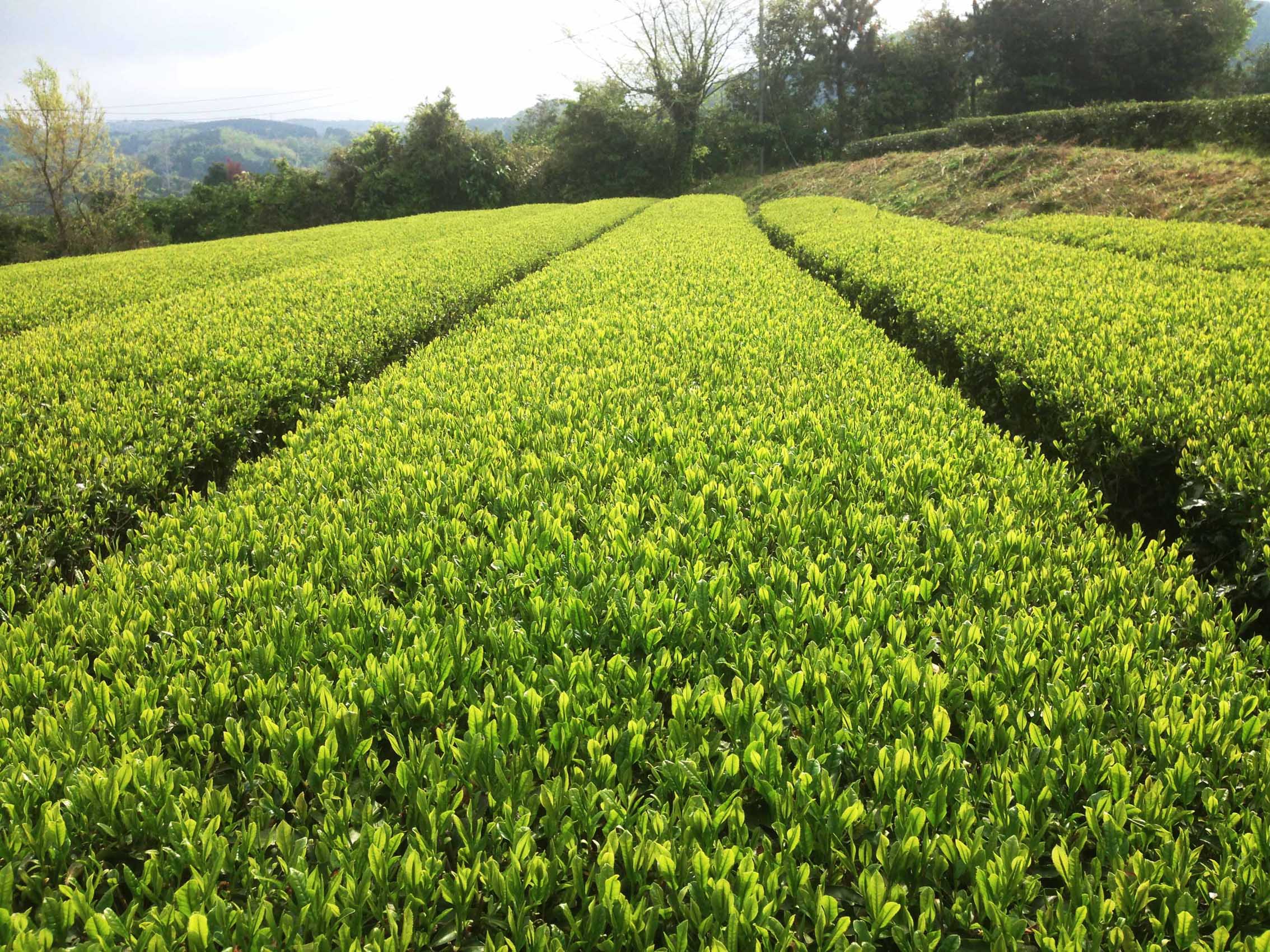In the last days, we have been en route in several trains even longer than usually, today we actually traveled till Kyushu. Hence we we were not able to post the new pictures from the tea gardens here in the Shincha blog 2017 on time. But now, we are going to catch up quickly.
In the following, you can find a picture of Mr. Matsumoto, showing how the leaves of the Yabukita bushes for the Shincha MOE look like on 18th April – that means 10 days after we showed the first picture of Mr. Matsumoto’s shincha tea garden.

While the harvest of the Shincha MOE at Mr. Matsumoto’s is delayed, like anounced, by about 10 days in comparison to average years, with family Watanabe the case is clearly more complicated. Why that?
At Mr. Matsumoto’s, the Shincha MOE is produced only from a single tea bush variety, namely the Yabukita bushes. The interessting point that defines the Shincha MOE, apart from Mr. Matsumoto’s philosophy of growing tea, is the extremly fine cut. Mr. Watanabe though works differently with his Shincha sorts. For them, he uses several different tea bush varieties, which he combines for his Shincha sorts in several ways.
Table of the Shincha harvest 2017, status 20th April 2017
| location | tea garden | tea bush variety | estimated date of the Shincha harvest 2017 |
| South-Kyushu, Kagoshima Prefecture, Yakushima Island |
Mankichi Watanabe’s organic tea garden | Kuritawase cultivar |
Harvested on 13th April 2017 |
| South-Kyushu, Kagoshima Prefecture, Yakushima Island |
Mankichi Watanabe’s organic tea garden | Yutaka Midori cultivar |
Harvest later as it is usual for Yutaka Midori – waiting for latest news |
| South-Kyushu, Kagoshima Prefecture, Yakushima Island |
Mankichi Watanabe’s organic tea garden | Sae Midori cultivar |
Harvested on 15th April 2017 |
| South-Kyushu, Kagoshima Prefecture, Yakushima Island |
Mankichi Watanabe’s organic tea garden | Asatsuyu cultivar |
Harvested on 15th April 2017 |
| South-Kyushu, Miyazaki Prefecture | Haruyo and Shigeru Morimoto’s organic tea garden |
Yutaka Midori cultivar |
28th April |
| South-Kyushu, Miyazaki Prefecture | Haruyo and Shigeru Morimoto’s organic tea garden |
Saki Midori cultivar |
29th April |
| South-Kyushu, Kumamoto Prefecture, region Minamata |
Kazuya Matsumoto’s tea garden |
Yabukita cultivar |
28th April |
| Honshu, Mie Prefecture, region Ise |
Iwao Hayashi’s organic tea garden |
Yabukita cultivar |
10th to 20th May |
| Honshu, Shizuoka Prefecture | comparative tea garden | Yabukita cultivar |
22th May |
The tea bush variety Kuritawase, which sprouts early every year, has been the first tea bush variety to be harvested this year, too. But only two days later, the varieties Asatsuyu and Sae Midori followed as second and third variety, concerning time of growth. This is surprising, because in the last years, the harvest of the Asatsuyu bushes was delayed several times by nearly a week, after the variety Yutaka Midori had been harvested long ago. This year though, the variety Asatsuyu is harvested proportionally early and the variety Yutaka Midori, which is known for a very early sprouting, is delayed. The climatic differences, concerning warmth, solar irradiation and the amount of rainfall, thus affect the the tea bush varieties’ growing cicles in different ways, so that their temporal point of harvest is delayed not only absolutely, but also proportionally to each other.